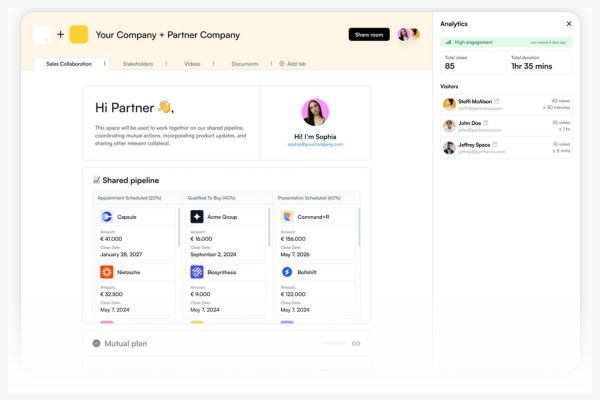Top 10 best practices for API security
Learn why API security is more important than ever and how strategies like encryption, input validation, and Zero Trust can help protect your data.

Chahat Mundra
13th November 2024
APIs, or Application Programming Interfaces, are the backbone of digital applications, enabling systems to communicate seamlessly. From mobile banking to social networking, APIs are essential for organisations and users alike. However, as reliance on APIs grows, so do security risks, as APIs can become vulnerable entry points for attackers. For organisations, understanding API security and the latest trends is crucial to protecting data and maintaining user trust.
Why is API security so important?
APIs often expose backend systems and sensitive data, making them attractive targets for attackers. An insecure API can lead to severe data breaches, unauthorised access, and potential regulatory non-compliance. As APIs increase in complexity, they become more susceptible to attacks, making robust security essential for any organisation that relies on them.
Key API security trends
Increasing API usage and associated risks
The rapid expansion of digital transformation initiatives has led to an increase in APIs, often resulting in “API sprawl.” This complexity makes it challenging for organisations to secure every API effectively, creating opportunities for attackers to exploit vulnerabilities.
Adoption of dedicated API security strategies
Companies increasingly implement dedicated API security solutions as traditional security measures fail to address API-specific vulnerabilities. These tools provide advanced features such as runtime monitoring, anomaly detection, and automatic threat blocking, helping organisations safeguard their APIs more effectively.
Shift towards zero trust security models
The Zero Trust model, which operates on the principle of “never trust, always verify,” is gaining traction for API security. Organisations can better protect sensitive data from unauthorised access by requiring strict verification for all API interactions.
Focus on securing GraphQL APIs
As GraphQL becomes more widely used, its inherent security challenges have come to light. Misconfigured GraphQL APIs can expose sensitive data through schema introspection. Organisations are addressing this by implementing tighter access controls and monitoring query complexity.
Automation of API documentation and compliance
Maintaining up-to-date API documentation is essential for security and compliance. Automated documentation tools ensure that APIs are accurately represented, reducing the risk of errors that could lead to vulnerabilities. This is particularly important in meeting regulatory requirements like GDPR.
10 steps to strengthen API Security
To bolster API security, organisations should consider the following strategies:
1. Implement strong authentication and authorisation
- Use OAuth 2.0 with OpenID Connect for reliable authentication.
- Adopt JWTs for secure access tokens and encourage Two-Factor Authentication (2FA) for additional security.
- Enforce strict identity verification to ensure that only authorised users access the API. This reduces unauthorised access risks significantly.
2. Enforce HTTPS and encrypt data
- Enforce TLS for data transmission to prevent interception.
- Encrypt sensitive data at rest and enable HTTP Strict Transport Security (HSTS) to force HTTPS connections.
3. Validate and sanitise all Inputs
- Only allow expected values using whitelisting to prevent injection attacks.
- Sanitise inputs to guard against malicious data injections.
4. Apply rate limiting and throttling
- Use rate limits per IP to prevent brute-force and denial-of-service attacks.
- Implement exponential backoff for repeated failed login attempts to hinder unauthorised access attempts.
5. Implement role-based access control (RBAC)
- Follow the principle of least privilege by limiting access rights based on roles.
- Use scoped tokens to restrict users’ access and keep detailed audit logs for security review.
6. Set content security policies (CSP)
- Use CSP headers to control resource loading and prevent unauthorised scripts.
- Configure Cross-Origin Resource Sharing (CORS) carefully to manage data sharing securely.
7. Conduct regular security audits and penetration tests
- Use automated tools like Burp Suite and OWASP ZAP for vulnerability scanning.
- Regularly conduct manual penetration tests to catch complex vulnerabilities that automated tools may miss.
8. Conduct regular security audits and penetration tests
- Set up real-time alerts for suspicious activity and enable centralised logging for better monitoring.
- Keep comprehensive logs for audit trails, which can assist in tracking and responding to incidents.
9. Secure API keys and secrets
- Store API keys in environment variables, not in code, and rotate them regularly.
- Use an API gateway to manage access and keep sensitive keys secure.
10. Implement API versioning
- Use semantic versioning (e.g., v1, v2) to signal changes in functionality.
- Deprecate older, insecure versions and notify users when version changes occur to encourage secure practices.
API penetration testing is essential for organisations to secure their applications and data against sophisticated threats. APIs are critical for connecting systems and supporting organisation operations, yet any vulnerabilities can lead to unauthorised data access, service disruptions, or financial losses.
Regular API penetration tests help organisations identify and resolve these risks early, ensuring compliance, user trust, and stronger security.



